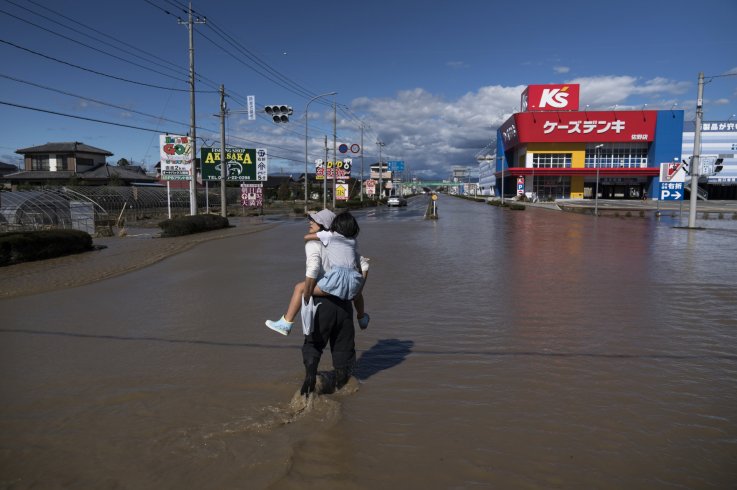Hagibis is classified as a "super typhoon" — that is, a tropical cyclone that is equivalent to a category 4 or 5 hurricane, according to the National Oceanic and Atmospheric Administration (NOAA). It has "maximum sustained winds of at least 150 miles per hour."
The storm hit Japan's main island, Honshu, on which Tokyo is located, around 7 p.m. on Saturday, according to the Associated Press. By Sunday morning, the storm had mostly spun out to sea, but had left a wide swath of destruction in its wake.
Torrential rainfall from the storm devastated some communities in its wake, causing deadly landslides as well as flooding from rivers. The Financial Times reported that Japan's Fire and Disaster Management Agency issued evacuation advisories and orders to 8 million people. Further, around 425,000 homes lost power, and a lower number were left without access to clean water.

Authorities and meteorologists had been aware of the danger Hagibis posed for Japan for at least a week. After the storm throttled the U.S. territories of Guam and the Northern Mariana Islands, it was clear that Hagibis would likely make contact with Japan.
Japanese authorities reportedly issued "unusually strong" warnings to the public ahead of the storm, according to the Financial Times. They compared Hagibis directly to another typhoon that affected Tokyo in 1958 and caused the deaths of 1200 people.
The warnings spurred people living in areas projected to be hit by the storm to buy food and tape to protect their windows en masse, according to the Financial Times. Some entire streets in Tokyo were left "virtually empty" as convenience stores and restaurants closed early. By Sunday, the Tokyo area had mostly returned to normal as transportation services were reinstated and residents began to return.
You need to be a member of Earth Changes and the Pole Shift to add comments!
Join Earth Changes and the Pole Shift